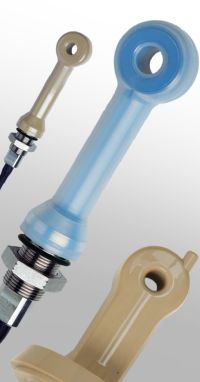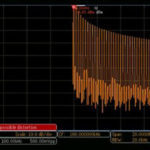Generally, an electrical conductor is a long solid rod, often insulated. It may be rectangular, like the electrician’s bus bar, irregular in cross section, or it may be merely a conductive path through the atmosphere, created by a process of ionization.
Most electronics professionals have measured the resistance of conductors typically using a volt-ohm meter. Most electrical conductors today are copper alloys. Aluminum is used for conductors in utility-scale installations where in such quantities copper becomes excessively costly. Aluminum has lower conductivity than copper. The electrical resistivity for copper is 1.724×10-8 Ω-m (0.0174 μΩ-m) and electrical resistivity for aluminum is 2.65×10-8 Ω-m (0.0265 μΩ-m), but is not really a problem when the wires can have a large diameter.
Electrical codes require aluminum conductors be used in larger sizes relative to copper when handling comparable ampacity. But aluminum conductors are problematic in regard to their terminations because the metal has a tendency to creep. More specifically, copper has a lower coefficient of thermal expansion. What this means is that unlike copper, a tight pressure connection on an aluminum conductor may loosen after about a year, causing the joint to heat up when electrically loaded. This loosening encourages the formation of corrosion with more heat and eventual equipment failure or electrical fire. The remedy is, during installation, to wire-brush and to apply corrosion inhibitor (composed of zinc powder mixed with polybutene) to mating surfaces and also to accurately torque all pressure joints.
In the 1960s and 1970s, aluminum wire was widely used in residential installations because of a spike in the price of copper, but aluminum use indoors fell into disfavor because of the many fires. Two factors came into play. First, aluminum terminations are far more problematic in small sizes. And second, with hundreds and sometimes thousands of terminations in a residential installation, the chance of error is great. (It takes only one bad connection to cause a fire.)
However, electrical conductors aren’t the only entities where resistance to current flow is an important parameter. There are many applications in agriculture, water quality, pharmaceutical processing, and other areas where the conductivity of liquids is important. Ordinary volt-ohm meters can give a rough idea of conductivity (the reciprocal of resistivity) in these applications if they have a sufficiently high resolution, but the usual approach is to use a specialized conductivity meter.
Of course, water is a poor electrical conductor. Distilled water is an extremely poor electrical conductor. The reason is substances (or salts) dissolved in the water determine its degree of conductivity. With more dissolved ions, the solution can carry more electrical charge.
A conductivity meter reports conductance as the inverse of a resistivity measurement. Material resistivity is reported as bulk or volume resistivity in ohms/cm, so conductivity is measured in mhos/cm and defined as Siemens/m (S/m).
Visible in this image of a Hanna Instruments HI 4321 is an amperometric probe, held in place by a positioning arm. This research-grade EC/Resistivity/TDS/Salinity benchtop meter is capable of millesimal measuring resolution of conductivity with an extended range from 0.001 µS/cm to 1 S/cm.
A conductivity meter typically has a probe with two closely spaced electrodes (usually 1 cm apart). This is called an amperometric probe. As with an ordinary DVM, the meter applies a known voltage to the electrodes and measures the current in the solution. Current is proportional with the conductivity. The probe pins themselves can be either graphite or stainless steel.
One difficulty with the amperometric technique is that the resistance can be precisely gauged but isn’t constant. Effects such as deposits on the electrodes and polarization because of electrolysis can make measurements drift. For low to medium levels of conductivity (< 2 mS/cm) the effect is not significant. For higher values the usual approach is to use a potentiometric probe.
The potentiometric method employs four rings: two outer rings apply an ac voltage and induce a current loop in the solution. The remaining inner rings measure the voltage drop induced by the current loop. The voltage drop measured directly depends on solution conductivity.
Potentiometric probes can be used in solutions where the electrolysis effect makes amperometric methods impractical. The rings are generally stainless steel or platinum depending on to what degree the rings must resist corrosion and cleaning.
Another method of conductivity measurement employs an inductive or toroidal sensor. The advantage of this technology is that measurement takes place without any electrical contact between the electrode and the process fluid. The probe uses two toroidal transformers which are inductively coupled side-by-side and encased in a plastic sheath. A high-frequency reference voltage gets fed to the first toroid or drive coil which generates a strong magnetic field. Conductive ions in the liquid close the magnetic field and induce a current in the second toroid.
An advanced digital handheld portable meter from Hach, part of the HQD series, for water testing pH, conductivity, TDS, salinity, dissolved oxygen (DO), and other measurements.
Conductivity meters frequently find use where there’s a need to measure the amount of totally dissolved solids in a solution because conductivity can be a function of dissolved solids. Conductivity meters frequently find use in agriculture to measure the salinity levels of surface water and of soil samples. Conductivity meters designed for such applications sometimes also can gauge other parameters such as pH and dissolved oxygen.
Another interesting application for conductivity meters is the measurement of plant damage. When plants are stressed there is typically damage to their cellular membranes. Electrolytes leak from the cells of stressed tissues. Using a conductivity meter to quantify this leakage gives an indication of the plant’s stress severity.





